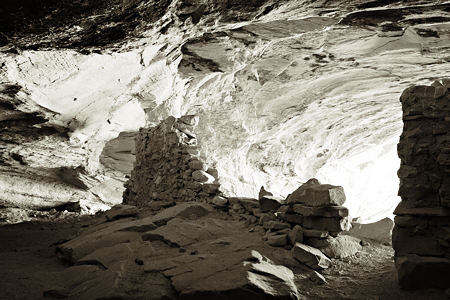Francis Bacon wrote: “There is no excellent beauty that hath not some strangeness in the proportion.” Just recently, by one of those common coincidences, I’ve seen this idea compellingly expressed in different contexts, though both related to art. One is the passage below from a Laurie Fendrich interview, which I had occasion to quote in a comment elsewhere.
The beauty in abstraction comes when abstract painters create marks, shapes, forms, and colors that tap into unseen but universal, psychologically beautiful forms and shapes. The marks and colors, since they range so widely in painting, bring to abstract paintings the poignancy of the individuality of each human being. I said I’m almost a complete Platonist, but I’m not a complete Platonist. I think deviation, or falling away from perfect form, is what makes something profoundly beautiful. Perfect beauty is different from profound beauty; the latter is always partly tragic and has something wrong with it, always, and without exception. The “something wrong” part is the handedness, or the individual way a painter paints, which points to the fleetingness of our lives. But it’s really simpler—beauty either is or isn’t, once a painting is done. If it knocks the socks off someone who sees it, and that someone is a deep and sensitive person, that’s the test. Period.
And then I was reading Adam Gopnik’s article on magic in the March 17 New Yorker, in which he discusses magicians’ Too Perfect theory, according to which a trick works best on the audience if it is not too well done.
What makes a trick work is not the inherent astoundingness of its effect but the magician’s ability to suggest any number of possible explanations, none of them conclusive, and none of them quite obvious. … magic works best when the illusions it creates are open-ended enough to invite the viewer into a credibly imperfect world.

And leaving you with that food for thought, I’m off to a another world myself, one into which I hope to invite you later. When this appears I’ll be somewhere on the Colorado Plateau, trying to make not quite perfect photographs of ancient ruins.

Steve,
I’m pondering the Fendrich quote again. She has some provocative ideas: “Perfect beauty” as differing from “profound beauty;” and in an almost offhand comment, form and shape as universal whereas color and “marking” are individualistic.
What I’m wondering is if “profound,” ie imperfect beauty, is in the eye of the beholder. Or in the rhetoric placed on the object?
Which, I think, brings me to the photograph which accompanies your post. I’m assuming you are thinking of it as “suggesting a number of possibilities, none of them conclusive…” But is that the same as the “profound” flawed beauty that Fendrich speaks of.
Numerous possibilities exist within your photograph, but frankly, my dear, in this case, I don’t give a darn. The thing itself is roughly perfect in its various elements and I’m not even tempted to go beyond thinking of it as “oh, a snowy landscape.”
I don’t see it as flawed or as suggesting possibilities but rather as a beautiful thing-in-itself.
Might it not be that we have come to accept roughness as beautiful and so elements that might be seen as flawed in an earlier culture (a flaw such as the lack of clarity of space in the photograph, for example) is so much part of its beauty that it can’t be called a deviation from perfect form. Maybe our concept of perfect forms have been altered so radically that the term scarcely makes sense any more.
There, I finally figured out what I wanted to say: in your photograph, I see a roughness which is perfect, and so “Maybe our concept of perfect forms have been altered so radically that the term scarcely makes sense any more.”
Aaaahhhhhhh, Steve must be back. Thanks, Steve, for fixing whatever it was that I muck ed up.
Indeed, the beholder must judge of the perfection or lack thereof, and there’s little the artist can do about it.
I think I’ve so saturated A&P with snow images of late that viewers are primed to see this as a snowbank or glacier looming over some garden walls. But actually, the walls are remains of ancestral Puebloan (Anasazi) structures in a cave in a very pale layer of rock. Unlike Plato’s denizens, we can see the brightness out there, though in fact it’s so overwhelmingly bright that we still can’t see out of the cave. (That may not be a profound reading, but at least it’s imperfect!)
Ok, you caught me! But now I see it as you described it. The bright rock outside is amazingly fluid and contrasts not just in brightness and shadow with the rocks but in the softness of fluidity as opposed to the hardness of the stacked rocks.
Amen. I also think “perfection” is alienating…finding sublimity in a flaw is more conforting that seeing it in perfection.
McFawn:
show me an example of this perfection and I’ll get back to you about it.
From another interview with Fendrich:
At high school, I was asked to draw a sine wave on the blackboard. She was breath-takingly perfect.
My idiot math teacher asked me to do it once more. Of course, the next one done with full consciousness came out terrible.